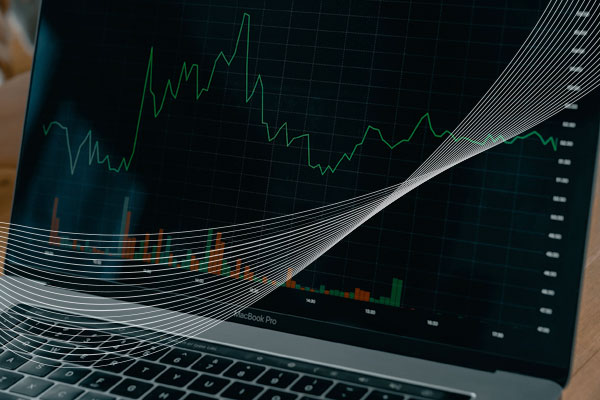Enjoy this Throwback Thursday post from December 2020, in which Barrett Thompson outlines how a total solution mindset, backed by the right data-driven tools, can transform how companies across B2B industries strategically price and sell.
Replace Line-Item Thinking
One of our sales directors shared with me an intriguing insight recently that came out of a customer meeting. He said, “They want to think more about the total solution sale and get out of the line-item business.” What this company is getting at is they often provide more value to their end customers than they ultimately recognize in price because they are stuck in line-item, per-unit-price thinking. Often the whole solution they bring to the customer is greater than the sum of its parts.
This brought to mind an everyday experience. When I’m at the grocery store, I expect to pay more for sliced and packaged watermelon than I would for the watermelon itself because someone’s labor has been put into that product to make my consumption more convenient, hence value is added. It’s self-evident that my purchase price per pound will be higher. Applied to my B2B customers, it begs the question: “Where in your business are you providing value, but failing to capture it because you’re stuck in line-item thinking?”
The concept of total solution selling is a close cousin of value-based pricing, in that there is intrinsic value being offered that’s not directly captured in a product’s underlying cost or list price. A value-based pricing strategy seeks to identify and quantify those drivers of value. Here are some common ways that a total solution framework generates more value:
Synergy and cohesion among how the individual parts work together. For instance, a semiconductor manufacturer sells the processor, memory and I/O chips as part of an exclusive set with tight interoperability. Items are pre-integrated or proven to play well together, thus lowering ad-hoc design effort on the buyer’s side, reducing installation effort and lowering risk. Logistics simplification: buying the whole solution from us, there are fewer suppliers needed for the initiative or project. This makes for easier ordering and simpler logistics, tracking and handling for the buyer. In some industries, buying a total solution lightens the operational burden on your team. Your people can better leverage their knowledge of vendor product lines-their ecosystem and conventions-without spreading themselves thin across a wider range of offerings that come and go.
Given all this, it’s clear to see what’s in it for buyers. The benefits are just as great, if not more so, for the seller, yet most large B2B companies don’t take advantage. Why?
Shift to a Consultative Selling Mindset
The equation is simple:as you sell more products to your customer that they need, you’re generating more value for them.Now you should be extracting a piece of that value back to yourself.
With so many products to sell and customers to service in so little time, sales reps tend to drift toward a line-item orientation in lieu of the more consultative solution selling technique. In doing so, they miss the forest for the trees. If you’re exclusively thinking about your business as a set of line items, each priced and defended on its own, you will miss the much bigger opportunity.
Imagine your customer comes to you to get all the parts that they need for a given project with confidence that these parts will work together, rather than piecemeal a solution together through different vendors. Can you charge more for that kind of value? Or discount less? You bet you can.The equation is simple:as you sell more products to your customer that they need, you’re generating more value for them.Now you should be extracting a piece of that value back to yourself.
We hear from manufacturers who have shifted into the total solution mindset sentiments to the effect of: “My customer doesn’t come to me just because I have superior products.My customer comes to me because I have the engineering, technical and design staff that can guide them to the product they need based on their application goals. What they really value is the consultative input from us.”
You may build 250 different memory chips. That’s great, but your customer often can’t discern which is the best fit for their project, as they’re not an expert in your catalog. It’s information overload. You possess the expertise to guide them to the five best options to fit their specifications, and by the way, “we can also bundle any of those memory chips together with the best-fit processor for the job and provide engineers to ensure a successful install.” That’s how a one-off becomes a long-term solution-oriented relationship. Crucially, this kind of relationship is one you don’t have to win or nurture solely on price.
The trouble is, far too many manufacturers and distributors aren’t set up to sell this way. Adopting a total solution mindset is step one, but the best strategy can only go so far when executed manually.
Let’s take a look at three examples of a total solution in specific industries and how data-driven software can ease the shift to consultative solution selling:
Electrical Products Manufacturing
One of the customers that we work with delivers electrical solutions to building contractors. The contractor provides a blueprint they received from an architectural design firm that includes the electrical plan. The builder doesn’t know exactly what products it needs, but it knows it needs to deliver 240 volts at 80 amps from the main feed all the way over to the far corner of the building, and it needs to adhere to all applicable electrical building codes.
The manufacturer has electrical engineers in its sales department who are tasked with taking the blueprint and turning it into a Bill of Materials that satisfies these electrical specifications and is then passed on for quoting. This “take-off” process adds value far beyond simply the product components that make up that BOM. It saves the builder time and headache, as they can move on to the next area of concern knowing electrical is in good hands. The electrical manufacturer has turned to Zilliant to ensure this relationship value-add is accounted for in its project pricing.
Food Service Distribution
One of the most difficult industries in which to avoid line-item thinking is food service distribution. Typically, sales reps default to rule-of-thumb margins to price thousands of high-velocity items quickly. If a distributor has invested in a sales intelligence tool, their reps may get an alert telling them they should go after the parmesan cheese business at a restaurant that is currently only buying tomatoes from them.
This is highly useful to increase your share of wallet, but this focus on line items as a seller does also set you up to be compared to your lowest priced competitor. To go one step beyond that, hold the parmesan cheese for a moment and start a conversation with the kitchen manager about the benefits of consolidating. She may be getting her food products from 15 different suppliers, meaning that 15 different times per weeks she has to stop what she’s doing to let them roll in a pallet of food and make sure they delivered the right things, before signing off on the order and putting those items into the cooler.
Instead, your value claim can be: “You come to me for fresh tomatoes, but did you know I also sell a wide range of other fresh foods, dry goods, jan/san products, biodegradable to-go boxes and plastic cutlery? How much easier would your ordering, inventory management, logistics and accounts payable be if you came to me for all of these categories?” If you can get the kitchen manager on board with a total solution relationship, suddenly the parmesan cheese becomes a rounding error.
Food distributors can also add value by helping restaurants with menu planning and optimization as part of a total solution.
MRO Distribution
Finally, let’s take a look at an industry that is ahead of most in the total solution game. Imagine a Maintenance, Repair and Operations (MRO) distributor sells O-Rings, washers, fittings, bolts, lubricants, and other parts that its customer needs to perform 10,000-hour maintenance on a big piece of industrial equipment that runs 24 hours at a plant. The MRO distributor will put together all those parts in the right quantities and sizes, as well as all the safety gear needed for the job, in one kit. That kitted maintenance package actually gets its own SKU ID and the MRO distributor prices it 10-15% higher than the cost for all parts bought individually.
Why would anyone buy the kit then instead of buying a la carte? Because the distributor has solved for considerable risk and logistical complexity associated with the maintenance activity itself. Consider, when the factory takes that piece of equipment offline for two hours in the maintenance window, they’re stopping production and giving up thousands of dollars of revenue and profit per hour while the machine is sitting there and the shift workers are at home.
Everything is dependent on them being back up in two hours, because the next shift is coming in, production schedules need to be met, trucks need to be loaded with product and those trucks have to roll on time. What happens if they begin the maintenance and realize they forgot to order that second O-Ring or have the wrong size hose?
The consequences of a maintenance delay are horrendous. So, darn right they’re going to pay more for that kit, which proves that it is possible to charge more for the sum of the parts, as long as you articulate the value correctly.
Data-Driven Software: The Engine Powering a Total Solution
As addressed in Part 1, the sheer volume of products, customers and transactions make the solution sale difficult for even the most seasoned sales rep. That’s not to say it’s impossible, but it is impractical to attempt to scale a solution selling culture in an environment in which pricing and sales teams rely on manual or one-off processes. That’s where the intelligent software tools come in.
Think of it as a two-step process.
- Bring more value to your customer (convenience, interoperability, consolidation, etc.)
- Hold on to some of that value for yourself
Step one requires awareness of everything that you could be selling to the customer at any given time, which an intelligent tool like Sales IQ™ accomplishes by profiling customers and comparing those profiles to an ideal customer. From here you understand where you should be cross-selling and where you are missing categories within a given customer account today.
Now, if you’re missing a lot of categories, chances are you’re not selling a whole solution, so you can’t get a premium price. But if the insights show you are approaching a total solution, i.e. if the missed category dollar opportunity is small, that’s a signal that you may be approaching what a total solution looks like. Cart IQ™, another AI-driven tool, identifies which other products expand the value of the current order scope and prompts sellers, customer service reps or buyers in direct channels to add those to their cart.
For instance, if a customer is buying a processor and memory, they surely need to also buy an I/O chips. Cart IQ automatically surfaces that part as a recommended addition to the quote.
Moving on to step two: Once you’ve suggested everything your customer should buy and they agree to add it to their quote, you now must come up with a price for that order that reflects something greater than just the sum of the parts.
By configuring discount rules and automating them through Price Manager™ and optimizing prices at scale with Price IQ®, you can consistently produce quotes that accurately reflect the value of the total solution you are providing. As an example, you can run the optimizer to come up with line-item prices and teach it that the more line items there are, the greater indicator that your solution represents an exclusive value to the customer.
Hence, the more line items that get added to a deal, the lower the discount percentage. It may seem paradoxical, but the bottom line is you’re not as concerned about losing the deal on price because you have proven your unique value. The customer is coming to you for a total solution for a reason, so articulate that in your sales conversations and reflect that in your price!
Conclusion
To be clear, there is a place for line-item thinking, especially when you are in growth or recovery mode with a customer. You can surely mine a lot of gold from transaction data to go after specific line-item opportunities. But when you’re the main provider and you offer something to that customer your competitors can’t match, you have an opportunity to capture more value for yourself.
Just remember, as Harvard’s Theodore Levitt famously said, “People don’t want to buy a quarter-inch drill bit. They want a quarter-inch hole!” Reorient your selling mindset to target a total solution whenever possible and lean on industry-leading software tools to identify, quantify and price the best deal – for you and your customer.



